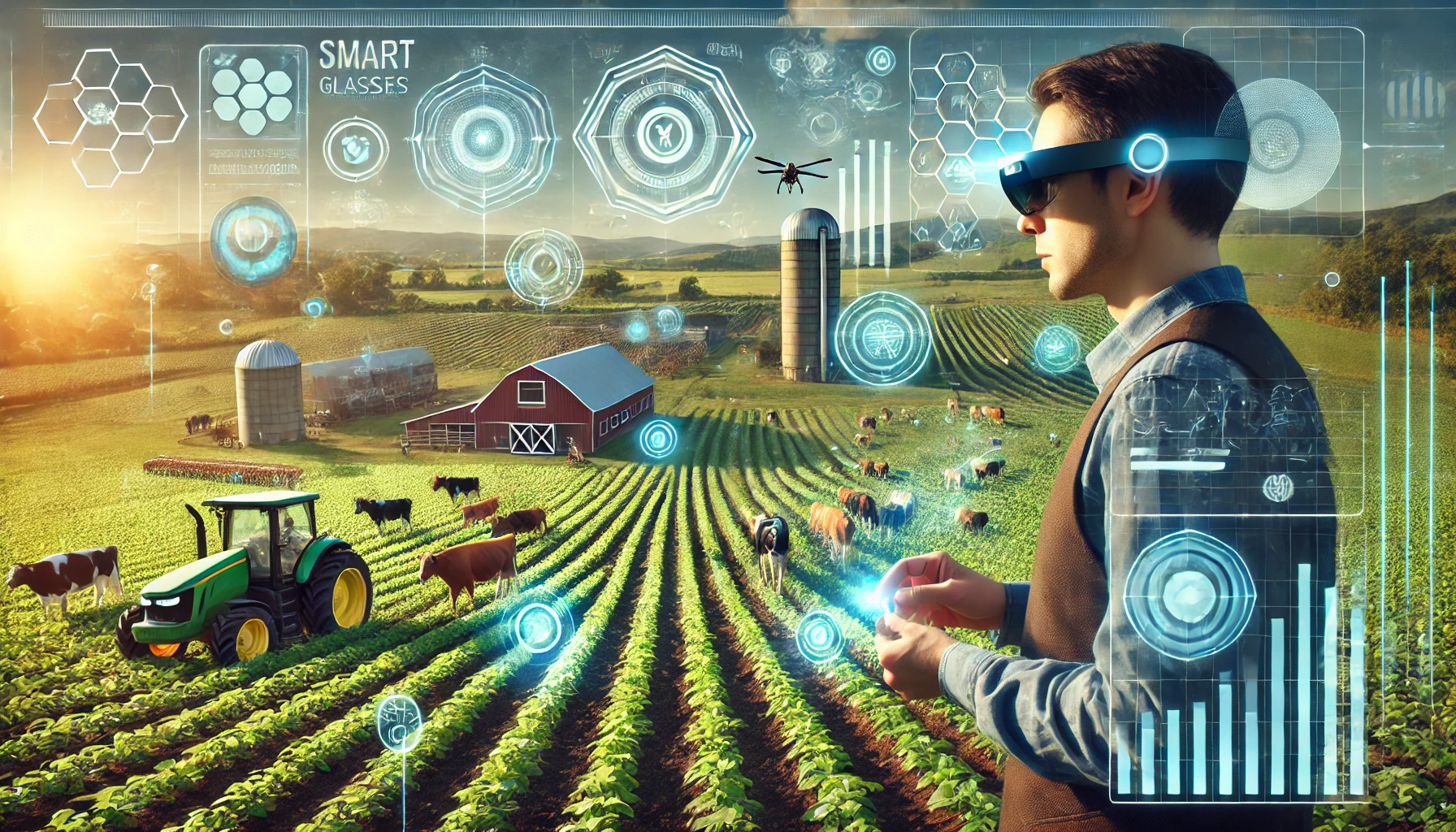Augmented Reality in Agriculture: Will Smart Glasses Lead the Next Farming Revolution?
The study by the University of Sassari explores the factors influencing the adoption of smart glasses and augmented reality in agriculture, highlighting that perceived benefits, ease of use, and compatibility are crucial for their acceptance among future farming professionals. It emphasizes the need for user-friendly, compatible technologies to drive widespread adoption in digital farming.

A study conducted by researchers from the Department of Agricultural Sciences at the University of Sassari, Italy. The research explores the potential adoption of smart glasses (SG) and augmented reality (AR) technologies within the agricultural sector, assessing whether these emerging digital tools could become integral components of the ongoing digital farming revolution. With digital technologies increasingly influencing farm management, the study aims to understand the factors that could drive or hinder the acceptance of SG in agricultural practices, particularly as these tools promise to enhance precision and efficiency in farm operations. The researchers employed the Technology Acceptance Model (TAM), a framework widely used to assess users’ acceptance of new technologies. In this study, the model was extended to include additional factors such as perceived benefit, compatibility, and self-efficacy, which are considered crucial in predicting the willingness of farmers and agricultural stakeholders to integrate SG into their daily operations. The study involved a survey distributed to agricultural science students, who were seen as future professionals likely to engage with these technologies in their careers.
Key Factors Influencing Adoption
The findings of the study revealed that the intention to use smart glasses in agriculture is strongly influenced by several key factors, particularly attitude, perceived benefit, and compatibility. Attitude towards the technology was found to be a significant predictor of its adoption. When agricultural stakeholders perceive SG as beneficial and easy to use, their attitude towards adopting the technology improves, which in turn increases their intention to use it. The study found that perceived usefulness, or the belief that using SG would enhance farm management activities, positively influenced stakeholders’ attitudes. This suggests that if stakeholders believe that SG can help them accomplish tasks more efficiently, such as improving the precision of farm operations like crop and livestock management, they are more likely to develop a favorable attitude toward these technologies. This positive attitude is crucial because it directly impacts the intention to adopt the technology. Moreover, the perceived ease of use was also found to have a significant impact on both the perceived usefulness and the attitude towards SG. If stakeholders find the technology easy to use, they are more likely to view it as useful and develop a positive attitude toward its adoption.
Perceived Benefit as a Driving Force
Another critical factor identified in the study is the perceived benefit of using SG. This factor refers to the stakeholders' belief that the technology will provide value that exceeds its cost. The study found that stakeholders who perceive significant benefits, such as increased farm profitability and improved decision-making capabilities due to the real-time information provided by SG, are more likely to adopt the technology. This suggests that demonstrating the tangible benefits of SG in improving farm management and reducing operational costs could be a key strategy in promoting their adoption. Compatibility was also highlighted as a vital factor in the adoption of SG. The study found that stakeholders are more likely to adopt SG if they perceive these devices as compatible with existing farming practices and technologies. This means that if SG can be easily integrated into current farm management systems, such as sensors, machinery, and software, stakeholders are more likely to view them as valuable tools that complement their existing operations.
Compatibility and Integration with Current Systems
The ease with which SG can be incorporated into the current technological ecosystem on farms is crucial for their adoption, as stakeholders are less likely to adopt technologies that require significant changes to their established practices. Interestingly, the study also explored the role of self-efficacy, which refers to the confidence in one’s ability to use the technology effectively. Initially, self-efficacy was included as a factor in the TAM model, but it was later removed to improve the model’s fit. This suggests that, unlike other factors, the confidence of agricultural stakeholders in their ability to use SG did not significantly influence their intention to adopt the technology. This finding highlights the importance of focusing on the perceived benefits and compatibility of the technology rather than on the users' confidence in their ability to use it.
Enhancing User-Friendliness for Widespread Adoption
Overall, the study underscores the importance of making SG and AR technologies user-friendly and ensuring their compatibility with existing farming systems to promote their widespread adoption. The researchers emphasize that the successful implementation of these technologies in agriculture will depend on addressing the key factors identified in the study, particularly perceived benefits, ease of use, and compatibility with current practices. The findings suggest that for SG to become part of the digital farming revolution, developers and policymakers need to focus on enhancing these aspects to encourage broader acceptance among agricultural professionals.
The Need for Further Research and Development
The study concludes by calling for further research to explore these factors in more diverse farming contexts and among different types of agricultural stakeholders to gain a deeper understanding of the challenges and opportunities associated with the adoption of SG and AR technologies in agriculture. This continued research is essential to fully realize the potential of these technologies in transforming the agricultural sector, ensuring that they are accessible, beneficial, and widely accepted across the industry.
- FIRST PUBLISHED IN:
- Devdiscourse










